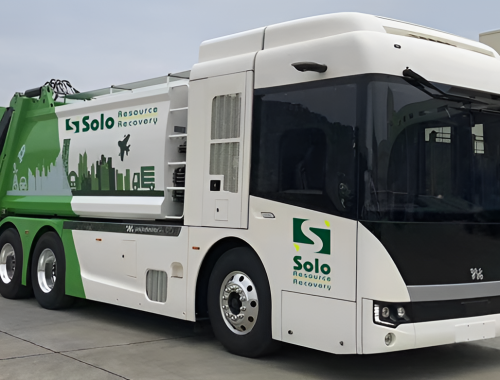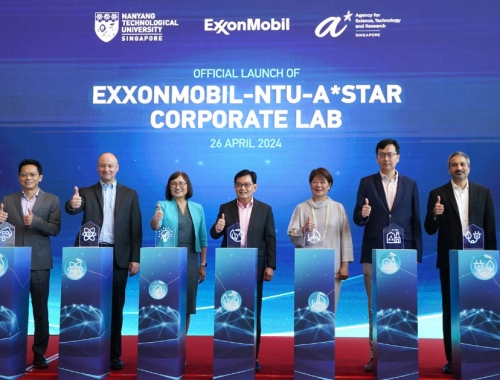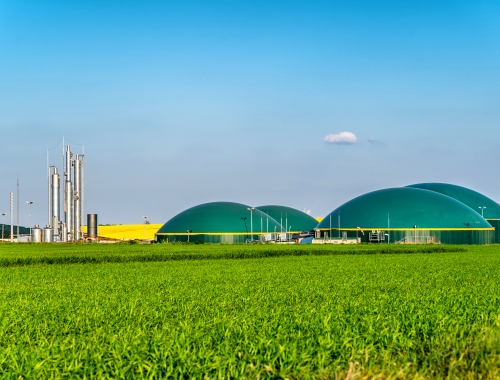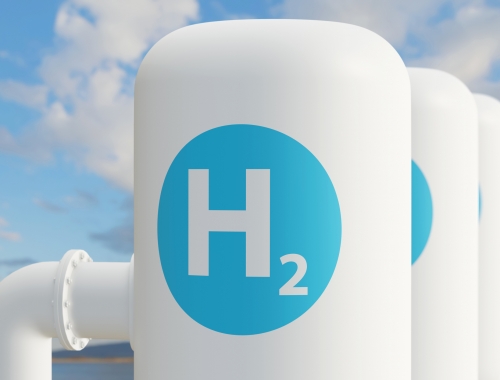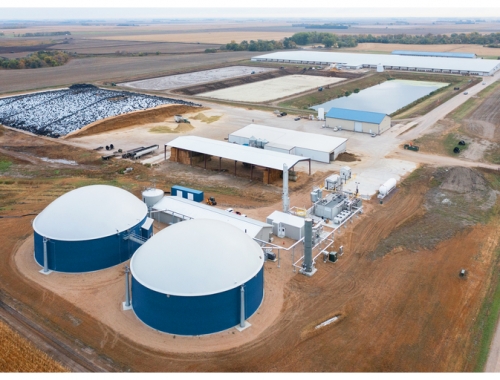Qube: Leveraging the Industrial Internet of Things to provide continuous methane monitoring
SUMMARY
Eric Wen, Chief Operating Officer of Qube, discusses with Gas Pathways how his company is utilizing AI-based environmental surveillance technology to detect, quantify, and localize methane emissions in real-time. [image credit: Qube Technologies]
By Mike WeberPOSTED IN:
Q: What is Qube’s offering to the oil and gas industry in terms of addressing methane emissions?
A: Qube provides oil and gas producers with an end–to-end continuous monitoring solution that detects, quantifies, and localises methane emissions. Our dashboard provides companywide emissions information with uninterrupted streams across all sites, along with the ability to roll up emissions by equipment or site to see emissions trends over time. The holistic, actionable data we provide enables operators to cost-effectively manage emissions across geographically distributed assets with ease.
Our platform is low-cost and easy to install, use, and scale - in contrast to other methane detection technologies which require either more capital to stand up, specially trained personnel to use, or both. Our platform’s ability to detect leaks in real-time and drive the appropriate remedial response provides operators with important environmental and economic benefits.
By detecting leaks when they occur and pinpointing the source, operations and maintenance teams can find and fix leaks quickly and prevent more gas from entering the atmosphere. At the same time, when operators can stop a leak quickly, more gas stays in the pipe for sale. Downstream, consumers see lower prices by way of the upstream efficiencies that we help create.
Q: We are entering a new age for the oil and gas industry with technological advancements that could revolutionise the sector and this technology is increasingly becoming less expensive. Tell us about how your solution is harnessing the capabilities of Artificial Intelligence, sensors, real-time monitoring, algorithms, and the cloud?
A: Qube’s cloud-based data and analytics platform consists of three components; (i) the data collected from IIoT devices, (ii) the cloud-based infrastructure used to store and analyse the data and (iii) the algorithms that use data stored on the infrastructure to train AI/ML models that can infer emission location, flow rate, and classification.
Qube has developed an ML-based approach for filling in emissions gaps between detections made by sensors placed around a facility. For example, when an emissions plume is continuous but wafting between sensors, there is potentially a gap in detection. If we only quantified detections, then we would under-quantify the true volume of an emission. So unless you deploy lots of sensors at a cost to customers, the most cost-effective solution is to use ML to 'fill in the gaps'. Extensive testing shows very promising results in terms of determining cumulative volumes over several weeks of controlled release testing.
These models require significant amounts of field data for training, which we gather from existing field deployments. The more we grow, the more data we have to train the ML models. Our models are therefore continually getting smarter.
Q: False positives are a major hindrance in monitoring methane leaks and VOC emissions. Can you explain how Qube’s technology roots false positives out?
A: We think of a false positive as an emission event that is recorded in the system when methane cannot be confirmed in the field. Paradoxically, the more sensitive your sensors are, the more likely they are to detect something that does not require a response. But ‘true’ false positive events rarely occur in the Qube system. If our system is detecting a leak, there is likely something there.
For example, we could be detecting venting or intermittent emissions. But when the operator goes out to verify the leak, they don't find anything at the time of inspection. This doesn't mean it's not there or didn’t occur, however. That's why setting the right alarm thresholds and having the right follow-up practices is so important. Since the impact of false positives can be measured in wasted time and resources, we work closely with our customers on best data practices and workflows to confirm or dismiss detections without over-committing resources. We believe this is the most effective way to avoid the resource trap of false positives.
Q: As ESG becomes a business imperative for the energy sector we are seeing more and more climate tech companies emerge. What makes Qube different from other companies in this space?
A: To be sure, social pressure on high emitting industries is driving climate tech innovation. We are different from other companies in this space because of our approach to product development and environmental impact.
We prioritise removing adoption barriers such as price, complexity, and scalability. As mentioned, the Qube platform is low-cost, easy to deploy, easy to use, and highly scalable. This runs in stark contrast to methods such as OGI cameras and flyovers, which cannot claim any of these critical adoption attributes.
With respect to environmental impact, we focus on helping operators stop the largest leaks fast. In a sense, we are elephant hunting to take the biggest problems off the table. Although this is not a precise figure, it is reasonable to say that 80% of an operator's emissions come from 20% of their leaks. While we can detect leak volumes as low as 1 PPM and address that 20% proficiently, we are especially adept at helping operators detect and act on the biggest leaks, where the most environmental impact and ROI is gained.
Q: Here in Canada, we are seeing especially in the province of Alberta growing support for the advancement of new technologies to reduce the oil & gas sector’s carbon footprint. How important have programs such as the Alternative Fugitive Emissions Monitoring Program (Alt-FEMP) and Emissions Reduction Alberta (ERA) been in helping Qube achieve technology breakthroughs?
A: The Alt-FEMP program has contributed to our growth and development in numerous ways. First and foremost, it has enabled operators to participate in pilots with Qube that would not have been possible without the program. (Of note, we are the first Alt-FEMP to use continuous monitoring, and we've demonstrated significant reductions relative to intermittent OGI inspections.)
We apply learnings from these projects to refine our system and product development priorities based on results and partner feedback. This positive feedback loop improves our platform, which in turn saves customers more money, which creates even more business opportunities for us, and so on.
ERA has provided Qube with invaluable financial and programmatic support. We have used ERA funding to collect data needed to train our models and refine our hardware to be deployable in various environments. ERA funding has also helped us create IP and other innovations that are exportable around the world. We’ve also created high-end jobs in Canada in computer science, data science, and environmental science.
Q: There is no question that the oil and gas industry will see a significant amount of emerging regulation in the years ahead. How does your technology help companies meet compliance requirements such as Directive 60?
A: Directive 60 and similar regulatory frameworks across Canada and the U.S. require upstream oil gas companies to meet various leak detection and repair (LDAR) requirements. Fulfilling these requirements is financially and logistically burdensome for many operators. For example, new proposed ECCC rules and methane targets likely mean that the frequency of required intermittent surveys will only increase.
Fortunately, a growing number of these regulatory programs allow the use of more cost and operationally efficient Alt-FEMP technologies like Qube. Because of things like Alt-FEMP, continuous monitoring can be used in lieu of intermittent checks so operators can install a technology that not only helps them meet current regulations, but future ones as well.
Qube can help operators meet these requirements by providing the same or better emissions management outcomes as legacy technologies, at a lower cost and more seamlessly with existing workflows. Unlike some legacy technologies, Qube can scale with our regulated partners, which is a significant benefit. As operators grow, we can grow with them and achieve even better economies of scale while providing better performance through continual model improvement.
Q: What geographical regions do you have customers in and are you targeting any new markets to expand to?
A: We have customers in every major production basin across North America, and we are actively expanding our footprints in South America and MENA.
Our continuous monitoring platform can be used to reduce emissions in the mining, utilities, and agriculture sectors. Although oil and gas producers receive the most regulatory attention and media coverage, other sectors are facing similar regulatory and social pressures to reduce emissions. The environmental and financial benefits that we provide oil and gas companies are just as compelling and needful to mining, utilities, and agriculture operations.
Qube is currently deployed at the City of Calgary Springbank Closed Landfill, and we are in the final stages of pilot development for major mining and agricultural operations. We are gaining significant traction in these new sectors and developing them further is a point of emphasis in the coming year.
Q: Finally, let’s discuss Qube’s growth. How have you grown over the years and what are your growth goals for the near future?
A: We started Qube in 2018 but spent the first 3 years just developing and refining our product. We now have offices in Calgary, Houston, and Midland. We became commercial in 2021 with a handful of pilots and have since deployed in most major basins with small, big, and major operators. We also have active pilots in Australia and the Middle East.
In 2022 Qube grew our install base by 10x, and we're looking to grow 2-3x this year in just oil and gas alone. We’re using our technology to measure emissions in other industries such as mining, landfills, and renewable natural gas. We think the world needs measurement-based emissions monitoring and there are a lot of things that could be measured that aren't currently, so we’re very excited about the future.

